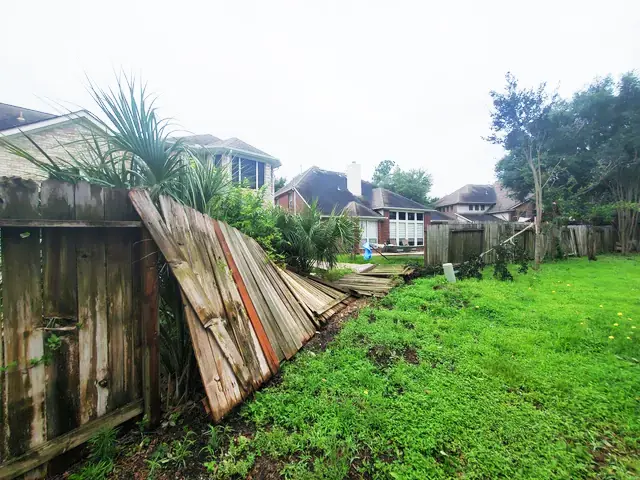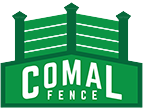
Table of Contents
Fence Insurance Claims for Wind-Damaged Fences in Texas
When strong winds sweep through Texas—especially across areas like Comal County, San Antonio, and the Hill Country—fence damage is a common issue. Whether a wooden fence is leaning, an iron fence is bent, or entire panels have been ripped out, property owners are left wondering: Is this covered by insurance? And if so, what’s the best way to file a claim?
This guide walks you through how to handle wind-damaged fencing, file an insurance claim, and get professional help with repairs or replacements—so you can move forward with confidence.
Does Homeowners Insurance Cover Fence Damage from Wind?
Most Texas homeowners’ insurance policies do cover fences under the “other structures” section. Wind is typically listed as a covered peril, meaning damage caused by high winds should be eligible for a claim—unless your policy has special exclusions.
Before filing, review your policy to confirm:
Your deductible amount
Whether your fence is covered under replacement cost or actual cash value
Any exclusions related to weather events
In coastal or high-risk zones, you may need additional windstorm coverage through a separate policy. Check with your insurer or the Texas Department of Insurance for details.
Step 1: Document the Fence Damage Thoroughly
The moment it’s safe to inspect your property:
Take multiple photos and videos of the damage from various angles
Include photos of the surrounding area to show storm debris or fallen branches
Note any secondary issues (such as broken automatic gates or displaced pets)
Avoid cleaning up until your insurance adjuster has seen the damage. If safety is a concern, document it thoroughly before removing broken pieces.
Step 2: Review Your Policy and Contact Your Insurance Provider
Review your homeowners policy for:
Coverage details for fencing and gates
Your deductible versus estimated damage cost
Any deadlines for filing claims
Then, contact your insurer to initiate a claim. Provide all documentation and request an inspection from their adjuster.
Pro Tip: If you have an automatic gate for your driveway, be sure to mention it—many policies consider gates separately from fencing, and may require additional details or coverage.
Step 3: Get a Professional Fence Assessment
While your insurance adjuster will inspect the damage, it’s important to get a quote from a local fence contractor who knows what to look for—especially in areas prone to high winds like San Antonio and New Braunfels.
At Comal Fence, we’ve been serving residential and commercial clients for over 30 years. We handle everything from wood fence repairs to iron, chain-link, and farm and ranch fencing—and we’re familiar with the specific wind conditions in Central Texas.
Our experienced team can:
Provide a detailed quote tailored for your insurance claim
Repair or replace fences damaged by wind, debris, or falling trees
Recommend more wind-resistant options for the future
Step 4: Repair or Replace? Making the Right Choice
Depending on the type of fencing you have and the extent of the damage, your best option may vary:
For Wood Fencing:
Cracked or splintered boards may be fixable, but widespread leaning or rot may require full replacement. Learn more about our wood fencing services if you’re considering a stronger or updated look.
For Iron or Metal Fencing:
Iron fences often hold up better in high winds, but bent or detached sections may need welding or full panel replacements.
For Farm or Ranch Properties:
Wind can cause significant damage to farm and ranch fencing, especially over large areas. We offer practical and cost-effective solutions for repairing long stretches of fencing quickly.
For Gates and Openers:
If your automatic gate opener was affected by the windstorm, we can inspect and repair motors, tracks, and access controls.
Step 5: Prevent Future Fence Damage
Once your repairs are complete, consider long-term improvements to reduce future risk:
Choose wind-resistant fence styles (e.g., horizontal slats, steel-reinforced posts)
Use concrete footings for added stability
Install steel or pipe fencing on large properties where wind gusts are strongest
Regularly maintain your fence to address weak points before storms hit
Want to be proactive? Our team at Comal Fence can recommend fencing systems built to withstand Texas weather. From solid pipe fencing to upgraded automatic gate operators, we’ve got you covered.
What If My Claim Is Denied?
It happens. If your claim is denied, ask for a written explanation. You have the right to:
Dispute the claim through the insurer’s appeal process
Provide additional documentation or contractor assessments
Consult with a public adjuster or attorney if necessary
Your contractor’s documentation and quote can help support your case during an appeal.
Don’t Delay – Let’s Get Your Fence Fixed
Filing a wind damage insurance claim doesn’t have to be stressful—especially when you have the right contractor on your side.
At Comal Fence, we’ll walk you through the process, provide accurate estimates, and ensure your repairs are completed with durability and care. Whether it’s a residential wood fence, a large ranch gate, or securing your commercial property, we’re here to help.
📞 Call us today at (210) 686-3932 or request a free estimate online.
.
